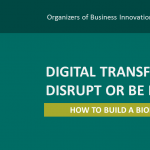The “Just Do It” Fast Track Pathway to Innovation
For companies pursuing a growth through innovation strategy, their innovation pipelines include multiple pathways to maximize value creation and capture. Four parallel pathways are generally. First, there is a product / technology development track (managed by some kind of stage gate or milestone project management process). Second, there is a venturing and new business model track (managed by a new business execution team focused on new partners, new pricing, and new offerings or bundling). A third track is a longer‐term major investment program and platform development track focused on creating major new growth engines for the company (managed as an investment portfolio of both major new business or process development initiatives). Finally, the fourth track is the “Just Do It” track that includes initiatives with little risk or liability and that will keep the news flowing on innovations coming from the company.
This “Just Do It” track enables the organization to quickly take business innovations to market when there is little financial, legal or brand risk and where part of the competitive advantage to be gained is dependent on speed to application. Furthermore, initiatives in this track are usually low or zero cost. This combination makes the “Just Do It” track attractive to companies during recessions, particularly those with low cash positions. This effort will at least preserve options for the future and prepare them for “What If?” scenarios.
One example of the importance and value of this “Just Do It” pathway was the evolution of the innovation agenda of Continental Airlines while the company was in bankruptcy several years ago. From a traditional mixed funnel of many innovation investments initiatives and service enhancement programs across all four tracks, the airline was forced to rapidly accelerate all fast‐to‐cash innovation initiatives that would help cut costs, while at the same time pursuing zero cost service enhancement initiatives that would be visible to customers positioning the airline for rapid recovery as they emerged from their crisis.
Taking advantage of more flexible work rules with employees, a spirit of collective ownership and a mission to emerge from the bankruptcy stronger than ever, the airline was able to institute roughly forty highly visible service innovations at almost low risk/zero cost. Furthermore, these innovations were implemented so quickly that it took other airlines six to twelve months to catch up. These innovations were as simple as opening up middle seats in all rows with frequent and therefore higher value flyers, providing express baggage handling for these high value flyers, implementing high speed flight boarding and exiting to guarantee on time departures and rerouting passengers more efficiently. As a result of these and other fast, low cost innovation initiatives which bypassed the conventional bureaucratic reviews and delays, the airline was able to be ranked first in J.D. Powers customer satisfaction survey almost the day it emerged from bankruptcy – a hugely valuable turnaround that reestablished Continental as leading contender in the industry.
In another example of using the “Just Do It” pathway, a large firm was forced to reduce investments in a number of large scale programs involving new technologies and new platforms. A number of these programs were moved to the “Just Do It” track to be managed as “real options”. In doing so, these programs were shifted towards partnering and smaller, faster experiments and beta tests. Instead of abandoning the projects these programs could be kept alive to be turned on and executed across the global footprint of the company as the economy recovered. The result was post recession growth at almost twice the rate of all its competitors.
Finally, an example from the current recession can be found in Hyundai’s “Assurance Program” that guarantees that buyers who lose their jobs can return the vehicle to Hyundai within one year of purchase with no payment obligations or damage to credit reports. The program has all three characteristics of a “Just Do It” innovation – no risk, no cost and speed to market. Rather than pile on another USD1,000 – USD2,000 in buyer incentives (e.g. cash‐back, no interest payments for a year, etc.) the carmaker offers a smaller discount and uses part of the money to buy insurance to cover the company if the buyer returns the car. And management has indicated program was implemented in thirty‐seven days from concept to launch. Even as other major automakers had to contend with sales declines of 30 percent or more, Hyundai reported a 14 percent increase.
Whether contending with a broad economic downturn or dealing with more specific industry or company related challenges, firms that must conserve cash to survive cannot afford to stop all innovation‐related activities – managers and firms that do not plan for the future will have no future when the economy, industry or company emerges from a crisis. In these situations, refocusing on the low risk / low investment initiatives in the “Just Do It” innovation track enable companies to maintain the focus on cash first while creating timely customer impact and real options for the future.
A third example – in this case a single initiative – was the introduction of “Roll‐ Over Minutes” by Cingular Wireless in late 2002 in the aftermath of the dot‐com bubble as the stock market bottomed and unemployment peaked. In a fractious six‐ player mobile market, Cingular announced that subscribers in its nationwide plan would be able to carryover unused, accumulated minutes to the next month for a period of up to twelve months. The new plan tapped into consumers desire to conserve cash while increasing customer satisfaction and loyalty without significantly reducing average revenue per subscriber.
